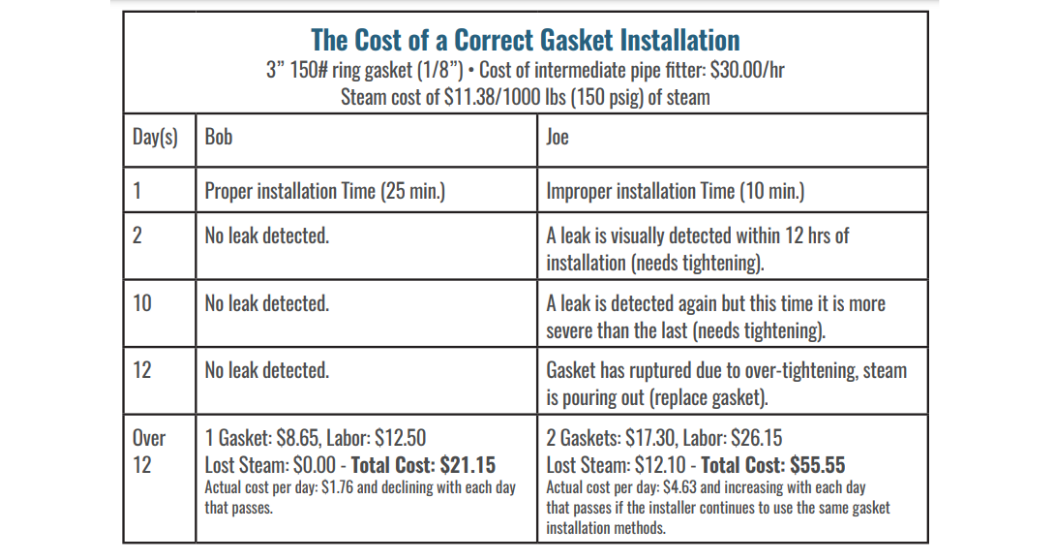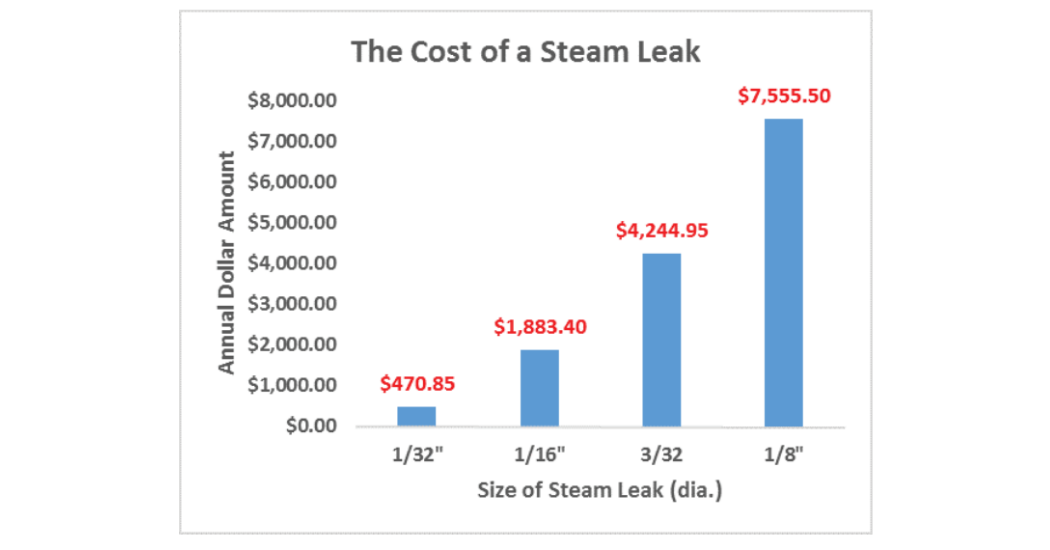In your hands-on role, have you ever truly thought about the actual cost of a correct gasket installation? The short definition of a correct gasket installation is:
- Choosing the correct gasket material for the application (refer to Gasket Material Selection Tool).
- Obtaining the recommended torque values from the material manufacturer.
- Using a properly accredited bolt tightening procedure (refer to ASME PCC-1).
- Wear the proper PPE.
What Will a Steam Leak Cost?
To help paint a picture, we would like to use a familiar scenario. To the right, we have two pipefitters: Bob and Joe. Both employees work at similar companies in town with the exact same amount of experience and training. Bob places a high degree of importance on the installation of gaskets in his plant, whereas Joe prides himself on how fast he can install the gasket and move on to the next task. Below is a side-by-side comparison of Bob and Joe’s installation of each gasket in the same application in a single bolted flange connection and the associated costs over a short, 12-day period.
Based on this scenario, here are a few things to consider: Proper gasket installation is initially more time-consuming but it improves your return on investment (ROI) – increasing operating profit by reducing overall downtime and gasket inventory requirements. This analysis is based on one 3” 150# bolted flange joint. Just think about how many bolted joints are in an average industrial facility, and just how many of these bolted joints leak on average.
Small Steam Leak = Big Cost
To help illustrate the costs associated with steam leaks, I have put together a bar graph using a steam loss calculator from American Plaint Maintenance, found at www.apmnortheast.com. The graph shows the average cost of a steam leak based on the diameter of the leak.
Now just imagine the above costs associated with 5, 10 or even 25 leaking bolted joint assemblies in your plant. Pretty scary thought, isn’t it?

Negative Impacts of Gasket Leaks
Finally, the most important part of installing a gasket correctly is the safety factor. I mean, what if the final failure occurred during the last re-tightening sequence? Joe could have been seriously burned which could have resulted in a loss time incident, heavy fines, or even a lawsuit.
Let’s not forget that there are also environmental considerations which failing to comply with could introduce hefty fines, negative media attention, or even remediation. So regardless of how quickly you can get the gasket installed, for the small amount of time saved, is it truly worth the probable outcome of a gasket failure in the end?


![Durlon Chemap® filters solve filtration tasks in a simpleand economic way [Case Study]](https://test.empoweringpumps.com/wp-content/uploads/2022/12/Durlon-Chemap®-filters-solve-filtration-tasks-in-a-simpleand-economic-way-Case-Study-7-380x199.png)


Comments